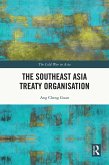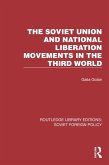Following the model of older European neutrals, Austria and Finland sought to combine neutrality with democracy. The combination was eagerly challenged by ideological Cold Warriors on both sides of the divide and questioned at home too. Was neutrality risking the neutrals' commitment to democracy, or did the commitment to the western type of democracy threaten their commitment to neutrality?
Confronting these doubts grew into an organic part of practicing neutrality in the Cold War world. The neutrals needed to be exceptionally clear regarding the ideological foundations of their neutrality. Successful neutrality required a great deal of conceptual consistence and domestic unanimity. None of this was pre-given in Austria or Finland. However, in the model of Switzerland and Sweden, (armed) neutrality was systematically integrated with the official state ideology and promoted as a part of national identity. Legacies of these policies outlived the end of the Cold War.
Dieser Download kann aus rechtlichen Gründen nur mit Rechnungsadresse in A, B, BG, CY, CZ, D, DK, EW, E, FIN, F, GR, HR, H, IRL, I, LT, L, LR, M, NL, PL, P, R, S, SLO, SK ausgeliefert werden.









